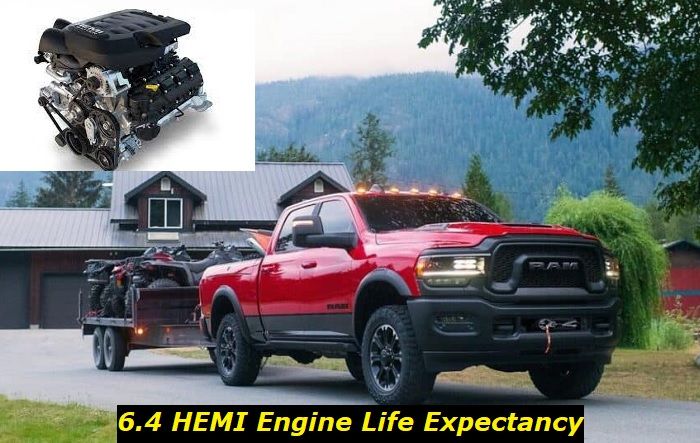You can drive with VCT solenoids unplugged, but you will get a code and the efficiency of the engine will be affected. Your MPG will go worse, and the engine will most likely work harshly. One more problem is that the valves may not be opening and closing in the needed time and this will affect the combustion process and may even result in engine damage.
Electrical problems leading to RPM anomalies highlights
- DIY repairs:possible but complicated
- Tools needed:inspection and repair tools
- Commonreasons:idle control valve, throttle position sensor, wiring, software
- Time to repair:1 - 2.5 hours
- Price for parts:$50 - $300
- Can you drive?Yes
- Alternative solutions:unplugging sensors, resetting or relearning sensors
.jpg)
Driving with VCT solenoids unplugged - what should you know?
VCT system started its way into the American market in the early 2000s. Before that, all engines had just a simple valve system that wasn't really efficient but was pretty reliable. When the VCT system fails several times a year, you may be thinking about alternatives to its expensive repairs. And you may end up thinking about disconnecting the solenoids.
You can drive with CVT solenoids unplugged - it will not immediately kill the engine. But I wouldn't say this will bring you a lot of joy. Unfortunately, the engines that are made to work with VCT solenoids will not be able to work smoothly without them. The only way to make this happen is to install several parts to bypass the system.
Here's what happens when you unplug the VCT solenoids:
- first of all, the work of valves becomes much less efficient, and not all injected fuel is combusted successfully;
- this affects the exhaust system and can slowly kill your catalytic converter and other parts;
- also, the check engine light will be triggered immediately just because the ECU senses that VCT is not working;
- the engine will work roughly and harshly, it may stall when idling, or it may lose its power significantly;
- your MPG will become much worse because the overall efficiency of the engine is lost, so it will burn more fuel;
- among long-term problems, I can think of engine damage, inability to pass the fog test, and other really bad issues.
Well, now you may start hesitating if you need to unplug VCT solenoids in your car. It may seem like an easy fix for the phaser or solenoid problems but actually unplugging these parts will only make things worse. Unfortunately, unplugging the solenoids will not make your engine more reliable and durable and will not solve the problems.
Although, you can unplug the solenoids and try driving to locate the problem. For example, if after unplugging the VCT solenoids nothing changes in the way your engine works, then the phasers and/or solenoids are faulty and need replacement. This is one of the ways to inspect a vehicle that has VCT problems.
Why won't you like driving with VCT solenoids unplugged?
First of all, this will make your driving less comfortable because of vibrations and low power. Secondly, the check engine light will illuminate on the dash and you won't be able to get rid of it till the problem is solved and the solenoids are plugged in again.
You will spend more money on fuel if you decide to drive like this. One more problem is that unburnt fuel will eventually get into the exhaust system, explode there and destroy expensive parts and units in this system.
Some of the unburnt fuel may also leak into the crankcase and down to the oil pan. This will dilute the oil, change its viscosity, and potentially damage the engine.
So, if you thought it was a good experiment, now you know that it isn't. Changing the original way your engine should work is not a good option even if the solenoids are malfunctioning. Though, you can try it as a desperate try to make the engine work at least somehow if the VCT system glitches heavily and makes the engine stall all the time.
VCT system lockout - worth your money?
You may remember those pre-VCT engines from 2000 or 2002 that were extremely reliable and very easy to maintain. Now, you may have a lot of problems with the same engines but equipped with VCT and cam phasers. It means that you may read forums and decide to install the so-called lockout.
There are several ways of lockouts for the VCT system in your car and I won't dive into the technical side of it. I will just say that yes, it's possible to lockout the VCT system perfectly fine and drive your engine without the cam phaser problems. But it will still affect the efficiency of the engine and will make it less economical.
Also, it's very possible that your truck or SUV will not be able to pass the fog test and you will need to urgently repair the VCT system and spend some more money to keep your vehicle legal on the roads.
So, the lockout is possible but, in my opinion, it's not a really good option for every driver. Maybe, you can use it if your state has really low requirements for fog tests or if your engine is completely failing with the CVT system. But in other cases, it's cheaper and more efficient to just repair the CVT and phaser system in your vehicle.
VCT system repairs - worth your money?
If you gave up the idea of lockout, you may be thinking about VCT repairs. And this is a much better choice. But for this, you will need a good mechanic who understands how the system works and what its common problems are.
If the problem is with just dirty solenoids, you may clean them even on your own. Search for some video tutorials on how to do it and just use the step-by-step instructions to get your vehicle back on the roads.
But if the problem is more serious, here's what needs to be done:
- a thorough inspection of the phasers and VCT system;
- inspection of the oil lines that supply solenoids with oil;
- cleaning of the solenoids - this will be an important additional step;
- using an OBD2 scanner to scan for any active or stored codes;
- repairing the system by replacing the units that were proven to be malfunctioning.
After the repair is completed, the car needs proper test-driving and more inspections to make sure that the problem is solved. Unfortunately, it's not always easy to locate the problem with the VCT system because the system is complicated and has a lot of common and uncommon issues. Also, some other units may affect the work of VCT solenoids and mislead you in the way you inspect the vehicle.
Repairing the VCT system is not always cheap. Even a good inspection may cost you quite a lot of money. Also, if some of the parts need to be replaced, they won't cost you a little money. All these issues have to be considered before you agree to have the engine repaired.
Why do VCT solenoids fail?
This system is not the most durable unit in your engine. Before the machine hits 100,000 miles, it works smoothly and very efficiently adding power to your vehicle and reducing fuel consumption. But after they hit the 100K-mile mark, bad things start happening.
Here are the reasons for the VCT solenoids failing:
- poor oil supply and really bad lubrication of the parts;
- natural wear of the solenoids is pretty common when the mileage is high;
- issues with phasers are common for vehicles after 200,000 miles;
- valves can also get problems and get contaminated, especially in direct injection engines;
- the solenoids easily get clogged because of issues with oil contamination or viscosity.
Once some solenoids work poorly, the engine becomes very harsh and impossible to drive. When you unplug the faulty solenoids, it may even work a little better. But you shouldn't leave the engine like this, anyway. Good repair or professional lockout are your two possible ways to solve the problem.
Final thoughts
Although VCT solenoids are famous for having so many problems with them, you shouldn't unplug them and drive like this. The VCT system needs proper lockout if you want to get rid of it. But, in my opinion, the system should be repaired instead. This will allow you to drive the vehicle and enjoy its full efficiency.
Of course, it's not always that clear how much money you will spend on repairing the VCT system, but, in most cases, the repair is worth your money while the lockout may appear to be very expensive and have very limited efficiency.
About the authors
The CarAraC research team is composed of seasoned auto mechanics and automotive industry professionals, including individuals with advanced degrees and certifications in their field. Our team members boast prestigious credentials, reflecting their extensive knowledge and skills. These qualifications include: IMI: Institute of the Motor Industry, ASE-Certified Master Automobile Technicians; Coventry University, Graduate of MA in Automotive Journalism; Politecnico di Torino, Italy, MS Automotive Engineering; Ss. Cyril and Methodius University in Skopje, Mechanical University in Skopje; TOC Automotive College; DHA Suffa University, Department of Mechanical Engineering






Add comment